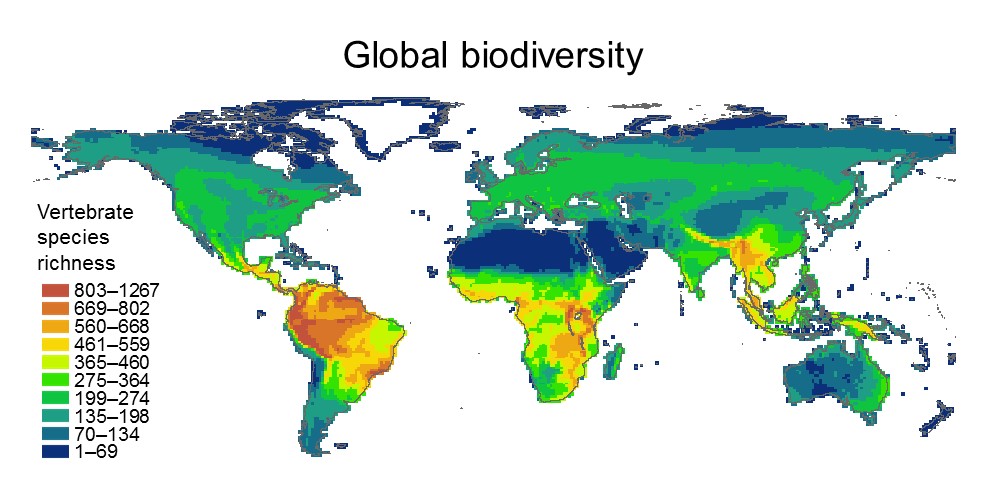Macroecology
BIOMAC participants: W. Daniel Kissling
The causes of variation in biodiversity at large spatial scales are intensively debated. We are investigating the broad-scale distribution and diversity of terrestrial vertebrates and plants at regional, continental, and global spatial scales. Particularly, we aim to disentangle the role of abiotic factors (e.g. current and past climate, habitat availability and structure, etc.), biotic interactions, and evolutionary or biogeographic history in shaping species distributions and macroecological diversity patterns. This includes using various statistical methods, including species distribution modelling, ecological niche analyses, structural equation models, diversification models, and spatial regression techniques. Current work extends this research to combine species distributional data with functional traits, phylogenetic information, and paleoclimatic reconstructions to develop an integrative and process-based understanding of macroecological and biogeographic diversity patterns. With this work, we generate and test hypotheses on the interplay of biotic, environmental, and historical constraints for species distributions and assemblages at broad spatial scales.
 |
| The map shows global diversity patterns across >20,000 vertebrates worldwide. |


